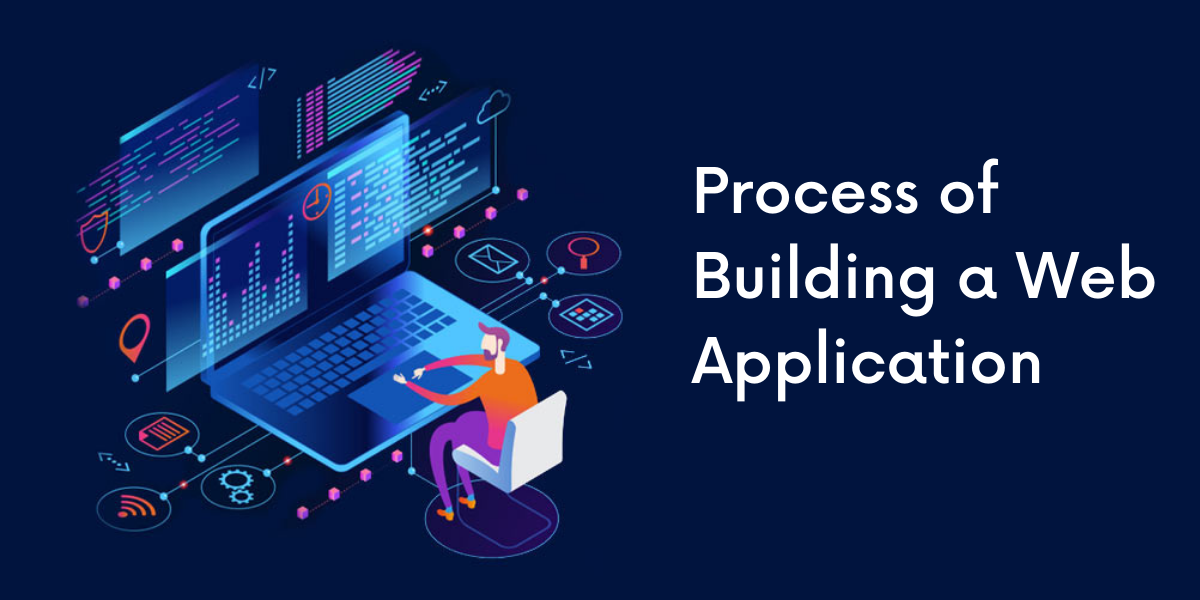The web application development process includes various steps that guide you to create an application that would meet your goals.
If we look at the entire web application process, then it involves defining a problem, thinking about a solution, creating a mockup, engaging with the users, selecting the right framework, developing the app, and testing it rigorously before launching it.
To know more about each of the steps in detail, let’s jump in.
Important steps in the web app development process
The web application development process can be divided into 6 different steps that are as follows.
Detailed planning
The first step in the web application development process is to create a detailed plan that would specify the purpose and the goal of the web app.
This step is important as it specifies the application objectives that should be met in an approximate timeline.
In this step, you have to research the needs of prospective users.
Additionally, you have to create a functional specifications document that would specify what type of functionalities and technical specification the web application should have.
Selection of third party vendors
In this step you have to identify the third-party vendors, products, and services that would be necessary for your web application, this would include the following.
· Selecting the web application development company that would finally build a web application for you.
· Selecting the best merchant account and payment gateway that you want to integrate with your web application.
· Getting the SSL certificate.
· Get detailed information and select the right server, network, firewall, and framework that is best suited to develop the web app.
Wireframing your web application
Once you have a clear idea about what to expect from your web app, you must map out the workflow of how your web application should respond to solve a problem.
Once you have a detailed workflow about how your web app will work, the next important step is to convert it into a wireframe.
A wireframe is a tool through which you can communicate the solution to a problem with your target audience.
Get Validation
Once you have created the wireframe, then you should present it to the target users.
Get their feedback and try to include all their suggestions to ensure that the end-users are happy with the final design of the application.
The web application development
Once you get the validation of the prototype of your app from the target audience, then you can start the actual process of web app development.
This can be further divided into different stages that include the following.
Designing
In this phase, you have to decide the color scheme, the overall appearance of the app taking into account the various features and functionalities that have to be built by the front end web developer.
Database
Find out what type of data you have to store in the database of the web app and the type. Once you have selected it, then start building the database.
Frontend
Make sure that the front end design should closely mirror the wireframe that you have got validated earlier.
For the front end, you would require HTML, CSS, and JS.
Backend
This is one of the most complicated parts of creating a web application.
The main function of the backend is to offer HTTP endpoints for your front end, authenticate the users, provide authorization, and assist the front end.
Beta testing and bug fixing
Beta testing of the web app and fixing the bug is an important part of the web app development process.
Robust testing procedures must be utilized to ensure that the final application is bug-free and can handle a large number of users at the same time.
Software testing can be categorized into two parts; automated testing and manual testing.
Automated testing
The software industry is increasingly using automated testing by creating artificially worst-case scenarios with the help of automated testing tools to check the performance of your app in those scenarios.
In automated testing, various parameters are checked that include unit testing, integration testing, load testing, stress testing, regression testing, performance testing, and so on.
Many automated testing tools are available in the market through which you can rigorously test your web app before launching it on the Internet.
Manual testing
While all the testing that we have mentioned in the automated testing can be also done manually, but it will take a huge amount of time.
In manual testing, web app developers use alpha testing, beta testing, and user acceptance testing wherein human intervention is required.
The main goal of manual testing is to ensure that the end-users and the client should like the web app and it should be developer-friendly and could be scaled up in the future.
Conclusion
Finally, you have to understand that when you are trying to build a web application you have to make a lot of choices.
Each choice has its pros and cons; therefore, you have to make a conscious choice of which options you must select that are right for the job at hand.
If you are new to this process and want to create a web application for your business, then we suggest that contact an expert who will build a web application that would help you realize your business goals.
sprunki horror Endless Fun Awaits!



